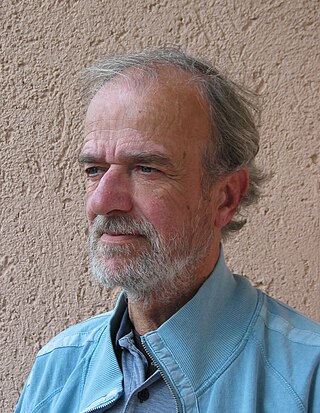Related Research Articles
Computer music is the application of computing technology in music composition, to help human composers create new music or to have computers independently create music, such as with algorithmic composition programs. It includes the theory and application of new and existing computer software technologies and basic aspects of music, such as sound synthesis, digital signal processing, sound design, sonic diffusion, acoustics, electrical engineering, and psychoacoustics. The field of computer music can trace its roots back to the origins of electronic music, and the first experiments and innovations with electronic instruments at the turn of the 20th century.
Electronic music broadly is a group of music genres that employ electronic musical instruments, circuitry-based music technology and software, or general-purpose electronics in its creation. It includes both music made using electronic and electromechanical means. Pure electronic instruments depended entirely on circuitry-based sound generation, for instance using devices such as an electronic oscillator, theremin, or synthesizer. Electromechanical instruments can have mechanical parts such as strings, hammers, and electric elements including magnetic pickups, power amplifiers and loudspeakers. Such electromechanical devices include the telharmonium, Hammond organ, electric piano and electric guitar.

An electronic musical instrument or electrophone is a musical instrument that produces sound using electronic circuitry. Such an instrument sounds by outputting an electrical, electronic or digital audio signal that ultimately is plugged into a power amplifier which drives a loudspeaker, creating the sound heard by the performer and listener.

Digital music technology encompasses the use of digital instruments to produce, perform or record music. These instruments vary, including computers, electronic effects units, software, and digital audio equipment. Digital music technology is used in performance, playback, recording, composition, mixing, analysis and editing of music, by professions in all parts of the music industry.
A music sequencer is a device or application software that can record, edit, or play back music, by handling note and performance information in several forms, typically CV/Gate, MIDI, or Open Sound Control, and possibly audio and automation data for digital audio workstations (DAWs) and plug-ins.

Clarence Anicholas Clemons Jr., also known as The Big Man, was an American saxophonist. From 1972 until his death in 2011, he was the saxophonist for Bruce Springsteen and The E Street Band.

IRCAM is a French institute dedicated to the research of music and sound, especially in the fields of avant garde and electro-acoustical art music. It is situated next to, and is organisationally linked with, the Centre Pompidou in Paris. The extension of the building was designed by Renzo Piano and Richard Rogers. Much of the institute is located underground, beneath the fountain to the east of the buildings.

Max Vernon Mathews was an American pioneer of computer music.
Perry R. Cook is an American computer music researcher and professor emeritus of computer science and music at Princeton University. He was also founder and head of the Princeton Sound Lab.

The Yamaha DX7 is a synthesizer manufactured by Yamaha Corporation from 1983 to 1989. It was the first successful digital synthesizer and is one of the best-selling synthesizers in history, selling more than 200,000 units.

Jean-Claude Raoul Olivier Risset was a French composer, best known for his pioneering contributions to computer music. He was a former student of André Jolivet and former co-worker of Max Mathews at Bell Labs.

Eduardo Reck Miranda is a Brazilian composer of chamber and electroacoustic pieces but is most notable in the United Kingdom for his scientific research into computer music, particularly in the field of human-machine interfaces where brain waves will replace keyboards and voice commands to permit the disabled to express themselves musically.
Russell Pinkston is a professor of composition and the director of the electronic music studios at the University of Texas at Austin School of Music.

A synthesizer is an electronic musical instrument that generates audio signals. Synthesizers typically create sounds by generating waveforms through methods including subtractive synthesis, additive synthesis and frequency modulation synthesis. These sounds may be altered by components such as filters, which cut or boost frequencies; envelopes, which control articulation, or how notes begin and end; and low-frequency oscillators, which modulate parameters such as pitch, volume, or filter characteristics affecting timbre. Synthesizers are typically played with keyboards or controlled by sequencers, software or other instruments, and may be synchronized to other equipment via MIDI.

Kasper T. Toeplitz is a French composer and musician of Polish origin, born in 1960. He lives in Paris.
James Dashow is an American composer of electro-acoustic music, instrumental music and opera.
Richard Charles Boulanger is a composer, author, and electronic musician. He is a key figure in the development of the audio programming language Csound, and is associated with computer music pioneers Max Mathews and Barry Vercoe.

Giorgio Nottoli is an Italian composer, musician and academic.

Eric Singer is a multi-disciplinary artist, musician and software, electrical, computer, robotics, and medical device engineer. He is known for his interactive art and technology works, robotic and electronic musical instruments, fire art, and guerilla art.
Arthur H. Benade was an American physicist and acoustician, researcher, professor, and author. He is best known for his research on the physics of woodwinds and brass instruments, and for two books, Horns, Strings, and Harmony (1960), and Fundamentals of Musical Acoustics (1976). He was a professor at Case Institute of Technology, in Cleveland, Ohio, from 1952 to 1987.
References
- 1 2 Daniel Gordon (Aug 4, 1991). "Cross-continent travel on two saxophones". The Sunday Telegraph. p. H1. Retrieved May 29, 2011.
- ↑ "Clarence Music Faculty to Present Free Concert". The Buffalo News. Sep 25, 1995. Retrieved May 29, 2011.
- ↑ "Clarence Musician Wins Fulbright". The Buffalo News. Sep 4, 1989. Retrieved May 29, 2011.
- ↑ "Gary's Saxophone Performance Stuff". Music.mcgill.ca. Retrieved 2012-08-17.